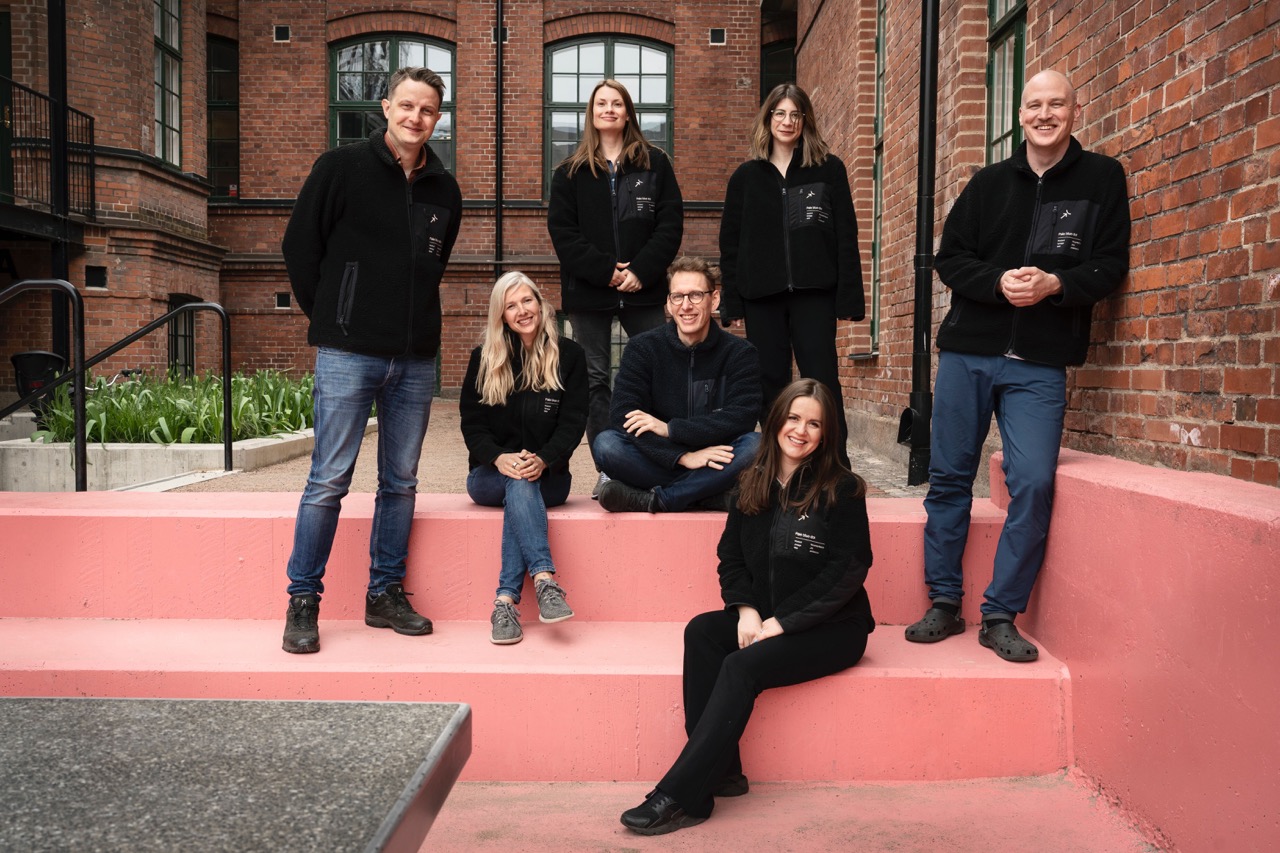Category: TECHNOLOGY
Cast your votes for the Disrupt sessions you want
In case you haven’t heard, you — yes you, TechCrunch readers — have a voice and a vote in the programming at TechCrunch Disrupt 2023, taking place September 19–21 in San Francisco. Audience Choice voting is open now through May 17 at 11:59 p.m. PDT.
Final chance: Today’s the last day you can score early-bird passes and save up to $800. Buy your pass by 11:59 p.m. PDT tonight!
You pick the programming at TechCrunch Disrupt 2023
Specifically, you help decide which of the 17 roundtable discussions and 15 breakout sessions will earn a spot on the Disrupt agenda. The 10 speakers — in each category — who receive the most votes will present their topics at the show.
Both roundtables and breakouts draw big crowds at Disrupt and for good reason. They focus on vital topics and issues that help increase your knowledge and grow your business. Here’s how the two formats differ:
- Roundtables: 30-minute, expert-led conversations focused on engaging collaboration and creating those magic moments when you make connections and share knowledge.
- Breakouts: 50-minute, expert-led sessions with a Q&A. These let you go deep on ways to solve specific challenges facing entrepreneurs.
Vote for the sessions you want at TechCrunch Disrupt 2023
Head over to the voting site to see the topics, descriptions and speakers of 17 roundtables and 15 breakouts (scroll through or use the filters and search feature). Click the arrow icon to the left of a session title to upvote it. The 10 roundtables and 10 breakouts that receive the highest number of votes will earn a spot on the Disrupt agenda.
It’ll take plenty of votes to get your favorites to Disrupt, so tap your networks of colleagues, fans, family and friends to get the job done.
Don’t dillydally — the voting period ends May 17 at 11:59 p.m. PDT.
We want you! Vote here for your favorite roundtables and breakout sessions. Urgent reminder: Early-bird pricing ends today, May 12 at 11:59 p.m. PDT. Buy your pass now to save up to $800!
Is your company interested in sponsoring or exhibiting at TechCrunch Disrupt 2023? Contact our sponsorship sales team by filling out this form.
Cast your votes for the Disrupt sessions you want by Lauren Simonds originally published on TechCrunch
Netflix reportedly plans to cut spending by $300 million this year
Netflix is planning to cut its spending by $300 million this year, according to a new report from The Wall Street Journal. The report indicates that part of the reason the streaming giant is looking to cut costs is because it delayed its plans to crack down on password sharing in the U.S. and elsewhere from the first quarter of the year to the second quarter, which means that revenue from the move is now expected to come in toward the second half of the year.
The company urged staff earlier this month to be sensible with their spending, including in relation to hiring, but noted that there would not be a hiring freeze or additional layoffs.
A Netflix spokesperson declined to comment.
It’s worth noting that although Netflix plans to cut costs by $300 million this year, this number represents a small fraction of the company’s overall expenses. For instance, Netflix’s operating expenses last year were about $26 billion.
The streaming giant beat estimates for the first quarter of the year but reported a lighter-than-expected forecast last month. Netflix raised its estimate for the amount of free cash flow it aims to generate in 2023 to at least $3.5 billion, up from $3 billion.
Netflix has been exploring new ways to generate revenue. The company launched its crackdown on password sharing in Canada, New Zealand, Portugal and Spain earlier this year. In these countries, Netflix requires paying users to set a primary location for their account. If someone they don’t live with uses their account, Netflix alerts them to “buy an extra member.” Netflix allows up to two extra members per account for a fee, which varies from country to country.
In addition, the company launched a new ad-supported plan called “Basic with Ads” last November. The tier costs $6.99 per month, which is $13 less than Netflix’s Premium plan, nearly $9 less than the Standard plan and $3 less than the Basic plan. With this plan, Netflix is competing with other major streaming services that offer ad-supported options, including Disney+, Hulu, HBO Max, Paramount+ and Peacock.
In an effort to lower costs, Netflix conducted a series of job cuts last year. In May 2022, the company laid off approximately 150 staffers. A month after that, the company laid off 300 more people, which represented about 3% of its workforce at the time. Netflix then laid off another 30 employees in September who were part of its animation department.
Netflix’s password sharing crackdown is expected to hit the U.S. on or before June 30.
Netflix reportedly plans to cut spending by $300 million this year by Aisha Malik originally published on TechCrunch
https://techcrunch.com/2023/05/12/netflix-cut-spending-by-300-million-this-year/
Onboarding and automation: What fintechs can learn from big banks
Contributor
When the economy is tight, financial institutions are faced with several mutually-reinforcing challenges. The temptation for bad action on the part of customers increases. This creates increased regulatory scrutiny, with the risk of massive fines for non-compliance.
The urge to reduce costs imperils continued investment in innovative financial products and services, while at the same time customers have higher expectations than ever for easy, effective, and great experiences.
On paper, this looks like a slam-dunk scenario for the burgeoning industry of new nimble fintech providers. It’s not – unless those fintechs can learn some lessons from established firms about customer onboarding. Those lessons ultimately come down to the marriage of process automation and a data fabric.
Why focus on onboarding?
The onboarding experience is the customer’s first impression of the organization and sets the tone for the relationship. It’s also the point at which the organization must accurately determine who the customer is and the true intent of their business. Fast and accurate customer onboarding is always important, but in an economic downturn, it becomes doubly so — investors rapidly lose patience for startups that can’t deliver growth and margin at the same time as regulators crack down on risk across the financial sector.
Effective onboarding is fintech’s Achilles’ heel. A data fabric that unifies information without moving it from systems of record is the answer.
Effective onboarding is fintech’s Achilles’ heel. Look at WISE, fined $360,000 by its Abu Dhabi regulator. Or, the UK’s Financial Conduct Authority fining GT Bank £7.8m for AML failures. Or, Solaris, the German Bank-as-a-Service (BaaS) provider slapped with a restriction to not onboard any future clients without government approval.
The inability of fintechs to properly manage the data and processes required for accurate onboarding may account for much of the decline in investment in 2022.
Data fabric and process automation improve onboarding
Onboarding starts with verified data, things like a name, an address, a tax ID, details of the proposed business, where the money is coming from, and where it’s going. The problem is that financial institutions are big, complicated organizations with myriad IT systems and applications holding siloed sets of data. These legacy systems across various products, customer types, and compliance programs don’t integrate well.
That means there’s an incomplete view of the matter at hand, and trying to complete that view usually means manual cutting-and-pasting between systems and spreadsheets. The opportunity for human error alone should be enough to strike fear into the heart of any bank manager.
A data fabric — a technology that unifies all enterprise data – without moving it from systems of record — is the answer. The data fabric creates a virtual data layer where mutable enterprise data, and the relationships between those data, can be managed in a simple low-code environment. The data is secured at row level, meaning only the people who should see it can see it, and only when they should see it. The data may be on-premise, in a cloud service, or in multi-cloud environments.
With a data fabric approach, you can combine business data in entirely new ways. This means you not only have a 360-degree view of the customer, their identity, history, product(s), but you can also glean new insights from seeing your enterprise data holistically.
Onboarding and automation: What fintechs can learn from big banks by Walter Thompson originally published on TechCrunch
https://techcrunch.com/2023/05/12/onboarding-and-automation-what-fintechs-can-learn-from-big-banks/
As AI consumes search, what will be left for us humans?
News from Google’s AI-soaked developer event this week makes it plain that we’re on the cusp of a new era of search.
Following Microsoft’s moulding of OpenAI’s tech into Bing, Google is experimenting with its own AI tech and opening up new ways to use search. It’s clear that we’re about to see the first major overhauls in the market for finding information on the Internet in a really long time.
The Exchange explores startups, markets and money.
Read it every morning on TechCrunch+ or get The Exchange newsletter every Saturday.
As with all major evolutions in technology, these changes to search will have broad and lasting impacts. There will be winners and losers, and among the latter, at least according to early reviews of Google’s new changes to search, will be websites that host writing.
Google and Bing will quickly grow adept at using large language models to generate answers to questions, precluding the need to visit websites to find answers. As a result, media companies, bloggers and scrappy SaaS startups could see fewer visits to their websites and less attention paid to their offerings.
Until the generative AI rush, changes to search engine tech felt incremental, unless it was for monetizing user activity. Google has toiled for years to increase the amount of answers users get on its search pages so they don’t head elsewhere, and has sometimes smoothed its advertising load so search results highlight its customers more than websites that don’t advertise.
Has this proven better for the Internet? I could argue that it hasn’t, but that’s pointless. I’m doubtful Google and its ilk will shake off that commercial bias and build features that will prove good for the end users at its own expense. They cannot afford to do so.
It’s only natural that Google and Bing are not going to prioritize the needs of third-party websites over their own while building their tech.
As AI consumes search, what will be left for us humans? by Alex Wilhelm originally published on TechCrunch
https://techcrunch.com/2023/05/12/ai-search-effects-implications/
Autonomous delivery startup Nuro to lay off 30% of workforce
Autonomous delivery robot startup Nuro will lay off 30%, or about 340 employees, across the company as part of a restructuring meant to extend its capital runway.
Earlier this week, Nuro co-founders Dave Ferguson and Jiajun Zhu explained in a blog post that the company would cut staff and shift resources away from commercial operations and toward R&D. Nuro will pause plans to ramp up commercial operations this year and delay volume production of its Nuro bot — the third-generation, or R3, delivery robot designed to be the flagship of its commercial strategy. Nuro will be able to operate twice as long by making these changes, giving it enough capital to operate another three years without raising more money, according to Ferguson and Zhu.
This is the second time in less than a year that Nuro — a darling of the AV world that has raised $2.13 billion — has laid off workers in a bid to cut costs and extend capital runway. In November, Nuro laid off about 300 people, or 20%, of its workforce.
Laid off employees will receive 12 weeks of severance, plus two additional weeks for employees with two or more years of tenure. Eligible employees will also receive 62.5% of target bonus (prorated for new hires) or payment of spring bonus amounts for employees on a biannual performance bonus. The company will also provide healthcare through September 30 and support to employees who hold visas.
Autonomous delivery startup Nuro to lay off 30% of workforce by Kirsten Korosec originally published on TechCrunch
https://techcrunch.com/2023/05/12/autonomous-delivery-startup-nuro-to-lay-off-30-of-workforce/
TechCrunch+ roundup: Minimizing M&A mayhem, cybersecurity PM checklist, open source AI
The volume of data required to train AI models comes with a cost: You’ll need deep pockets to acquire powerful GPUs and the scientists and engineers who’ll manage the work, not to mention the matter of power consumption and related carbon emissions.
Given the tremendous barrier to entry, is it worth considering whether open source foundation models could level the playing field and also address concerns about privacy and bias?
“We’ve now entered a critical phase of AI where who gets to build and serve these powerful models has become an important discussion point, particularly as ethical issues begin to swirl,” writes Jae Lee, CEO and co-founder of Twelve Labs.
For an article we’re running on her last day at TechCrunch, Natasha Mascarenhas reached out to four investors to find out whether FOMO is encouraging them to climb aboard the AI bandwagon.
“Some are hiring talent to jump headfirst, others are happy to back the ‘ChatGPT for X’ spin-outs, and many are sitting in awe, watching their existing investments spark an AI debate of their own, no due diligence needed,” she wrote.
Full TechCrunch+ articles are only available to members
Use discount code TCPLUSROUNDUP to save 20% off a one- or two-year subscription
Here’s who she spoke to:
- Charles Hudson, managing partner/founder, Precursor Ventures
- Jason Lemkin, managing director, SaaStr Fund
- Cathy Guo, partner, Sapphire Ventures
- Navin Chaddha, managing director, Mayfield Fund
Congratulations, Natasha; I wish you all the best with your future endeavors!
Thanks for reading,
Walter Thompson
Editorial Manager, TechCrunch+
@yourprotagonist
Making foundation models accessible: The battle between closed source and open source AI
Image Credits: JESPER KLAUSEN / SCIENCE PHOTO LIBRARY (opens in a new window) / Getty Images
The volume of data required to train AI models comes with a cost: You’ll need deep pockets to acquire powerful GPUs and the scientists and engineers who’ll manage the work, not to mention the matter of power consumption and related carbon emissions.
Given the tremendous barrier to entry, is it worth considering whether open source foundation models could level the playing field and also address concerns about privacy and bias?
“We’ve now entered a critical phase of AI where who gets to build and serve these powerful models has become an important discussion point, particularly as ethical issues begin to swirl,” writes Jae Lee, CEO and co-founder of Twelve Labs.
Unlocking the M&A code: 5 factors that can make (or break) a deal

Image Credits: mjrodafotografia (opens in a new window) / Getty Images
A merger or acquisition is the start of a new relationship, which is why most people approach exits with optimism.
“But all’s not rosy in the world of M&A,” writes SmartBear CEO Frank Roe, who has completed eight acquisitions in less than five years.
“It is a complex and substantially risky decision, not for the faint-hearted. It is essential to approach the decision and process with diligence and forethought.”
In this TC+ guest post, he shares “five indispensable elements to consider for a successful mergers and acquisitions journey,” reminding readers that “there’s no ‘secret formula.’”
Pitch Deck Teardown: Fibery’s $5.2M Series A deck

Image Credits: Fibery (opens in a new window)
Based in Cyprus, workflow and knowledge management platform Fibery raised a $5.2 million Series A in September 2022.
Haje Jan Kamps analyzed the winning presentation and shared his suggestions for improving the company’s 15-slide deck:
- Cover slide
- Problem slide
- Solution slide
- Market-size slide
- Competitor slide
- Competitive analysis slide
- Product slide
- “Building blocks” slide
- Feedback/customer validation slide
- Go-to market strategy slide
- Business model slide
- Traction slide
- Milestones to date slide
- Team slide
- The ask slide
Ask Sophie: Can I apply for an EB-1A without first getting an O-1A?

Image Credits: Bryce Durbin/TechCrunch
Dear Sophie,
What do you think about applying for an EB-1A straight away without first using the O-1A as a stepping stone?
Thanks!
— Extraordinary Engineer in Escondido
3 key metrics for cybersecurity product managers

Image Credits: Tetra Images (opens in a new window) / Getty Images
Cybersecurity product managers usually measure conversion rates, detection accuracy and usage/engagement to gain customer insights, but these metrics “may not be what they seem,” writes Ross Haleliuk, an investor who’s also head of product at LimaCharlie.io.
“Context matters a lot, and the realities of different organizations, geographies, cultures and market segments heavily influence what can be measured and what actions can be taken based on these observations.”
TechCrunch+ roundup: Minimizing M&A mayhem, cybersecurity PM checklist, open source AI by Walter Thompson originally published on TechCrunch
11 investors predict a colorful, if difficult, future for psychedelic startups
How far has the psychedelics medicines industry come over the past 12 months? Well, it depends on where you look.
If you look at the stock market, the view isn’t very good: the charts are all down and in the red, and all you can see are psychedelics companies tottering by, doing their best to impress cynical investors.
Similar to most other sectors today, that crumbling of confidence in the sector has trickled down to the private markets as well, slowing down venture dealmaking and further shrinking deal sizes in an already parched venture market.
But if you focus and leave your preconceptions behind, you’ll find that beyond the skein of valuations and share prices, there is a world of spirited dealmaking, ripe with impetus for building a sustainable industry. A recent survey by TechCrunch+ indicates that investors and founders are, instead of simply looking for attractive opportunities, increasingly putting their minds to building the foundations for an industry that can employ the power of psychedelics to change lives.
For Bek Muslimov and Nikolay Tretiyakov, co-founding partners at Leafy Tunnel, the problems currently being tackled by the industry are proof of the nascent sector’s progress. “The questions our industry is grappling with are becoming more refined and nuanced, reflecting the necessary maturation. Amongst these questions are actual costs of therapies, reimbursement coverage, the commercialisation strategy for psychedelic drug development companies, resource bottlenecks with the therapists’ supply and infrastructure, etc,” they told TechCrunch+.
We’re widening our lens, looking for more investors to participate in TechCrunch surveys, where we poll top professionals about challenges in their industry.
If you’re an investor and would like to participate in future surveys, fill out this form.
Regulation is moving forward, too, albeit slowly, with only Oregon and Colorado taking steps to partially decriminalize psychedelics. But even as the industry looks to those states to serve as testbeds for everything from drug development to integration into the healthcare infrastructure, several investors pointed out that the U.S. is not the only place where psychedelics are seeing interest.
“Decriminalization is not the same as legalization at the Federal level. I believe we will continue to see international locations as primary testbeds as the larger question of legalization in the U.S. is discussed,” said Amy Kruse, chief investment officer, Satori Neuro. “The developments in Australia this year are extremely interesting and worth watching closely. As Australia is often a site for clinical trials research in the psychedelic medicine ecosystem, it will be worth watching to see how this develops. Will they take the lead?”
Like several investors we surveyed, Kruse doesn’t solely invest in psychedelics, but they are very much on her radar. The firm she’s part of, Satori Neuro, is a new venture that aims to invest in solutions to address mental health challenges, including psychedelic medicine.
But she and her ilk are part of the few investors willing to enter the space, as the majority of investors, especially institutions, still labor under misapprehensions about psychedelics or aren’t interested in risking their money or reputation.
“For most institutional investors, psychedelics continue to be a ‘no can do’ sector to invest in,” said Sa’ad Shah, managing partner at Noetic Fund. “While we can certainly argue for the major strides made and progress on the regulatory front, institutions still need to see it to believe it. Secondly, this sector is still too small. It does not warrant the kind of capital that most institutional investors typically put to work.”
When this could change likely depends on how regulation is framed and how the healthcare industry responds to advances in the space. But that’s not to say the path to commercialization and wider adoption is closed to psychedelic startups and investors at the moment.
Tim Schlidt, co-founder and partner at Palo Santo, explained it succinctly: “Rather than seeking to change how our healthcare system operates, we believe this early generation of psychedelics must transform and adapt to fit within existing infrastructure. Rather than trying to storm the ramparts, we believe a Trojan horse approach is the only means by which these therapies can achieve wide-scale adoption.”
Read on to learn about where these investors are placing their bets, how they decide which companies to back, what are the prospects for M&A in the space, how to best approach them, and more.
We spoke with:
- Sa’ad Shah, managing partner, Noetic Fund
- Ryan Zurrer, founder and director; Ozan Polat, partner; and Daniel Tarockoff, partner; Vine Ventures
- Tim Schlidt, co-founder and partner, Palo Santo
- Amy Kruse, chief investment officer, Satori Neuro
- Clara Burtenshaw, partner, Neo Kuma Ventures
- Greg Kubin and Matias Serebrinsky, general partners, PsyMed Ventures
- Bek Muslimov and Nikolay Tretiyakov, co-founding partners, Leafy Tunnel
Sa’ad Shah, managing partner, Noetic Fund
How has the trajectory of listed psychedelics companies affected private firms and start-ups?
Listed psychedelics companies were highly overvalued in 2021, and the correction in the markets has brought valuations for private companies back to more standard early-stage levels.
Investors are more prudent with capital today, allowing capable founders and teams working on a great product with a good business plan to shine through rather than being drowned out by the noise.
The adjustment of expectations from investors also allows private companies to grow organically and make decisions with good counsel.
Sa’ad Shah, managing partner, Noetic. Image Credits: Andrew
At the same time, generalist investors burned by investing in bad apples could now have developed an adverse view to investments in the space, costing good companies backed by deep tech venture firms access to additional pools of capital. The inability to raise more capital in this environment has caused many good companies to shelve or halt promising programs and prioritize survival over rapid growth.
Other than disagreements over prices, which factors have impeded M&A activity in the psychedelic space in the last 12 months?
There are three main factors impeding M&A activity:
- Isolating the magnitude of efficacy: While there are clear signs of efficacy in clinical trials, the magnitude of the effect being assignable to psychedelics alone is still a work in progress. Big pharma awaits more data on this front before an M&A move. In the meantime, pharma and big biotech VC firms are more interested in exploring the non-hallucinogenic psychedelic pathways.
- Intellectual property uncertainty: Due to the 18-month window of uncertainty in filing patents and being granted one, there is some hesitation with acquisitions.
- Maintaining cash balances: In this environment, biotechs are focusing on prioritizing and rationing their cash for their lead programs and are being more deliberate than before when making big moves.
Drug development is very costly, and start-ups are having a harder time raising cash. Does this make psychedelics startups that aren’t developing any drugs more attractive to investors than those involved in drug development?
Business models that can generate revenues with low burn rates have always been more attractive to the traditional investor than non-revenue generating businesses like drug development. However, there are investors who still understand the unique risk-reward profile in each case, and hence, founders need to be able to approach the right investor.
There are drug development companies that continue to raise capital at higher valuations due to the continued validation of efficacy and the “optionality” that exists in their program — i.e. they are pursuing several promising leads/molecular pathways. What is riskier, especially at this point in time, are pure drug discovery companies that don’t have any leads to take into trials anytime soon.
Whether developing a drug or not, a company would be attractive to investors if and only if it is addressing a key problem in the market that cannot already be solved by incumbents efficiently. Several non-drug development companies touting to be “specific to the psychedelic industry” would only be successful in the long term if they have a unique and differentiating value proposition, can develop a sustained economic moat, have a proven track record of raising capital, and have the right team to execute.
How has your approach to the psychedelics sector changed since our previous psychedelics survey a year ago?
Our view of the markets from a year ago has only been validated by what has transpired in the psychedelics market.
Our overall focus is and has always been on central nervous system (CNS), and we are agnostic as to the modality, be it psychedelic drug development, other pharmacological approaches, medtech devices, or digital therapeutics.
When it comes to the psychedelics sector in particular, we feel this industry has clearly matured from being a toddler in its terrible twos to an adolescent, but there is still a long way to go. We continue to focus on the non-hallucinogenic approach to psychedelics, as it has the most promising prospects of being commercialized with much less scrutiny while adhering to current standards of care.
We were not surprised by the closure of several ketamine clinics, as we stated last year that given the industry’s life cycle, we are too early for “downstream” opportunities to have a viable chance of succeeding.
What we weren’t expecting was the level of headwinds the markets are facing overall, which is affecting money-good companies from raising additional capital to shepherd their plans through. This is very much a Darwinian model being played out. The strong and most adaptable are the ones that will survive.
We have to accept that the failure rates for a startup in a new industry such as ours will be high, especially in light of the macro backdrop. As such, our approach is to have a high-conviction portfolio and lean on/back the companies that have the ability to execute well in any given environment.
We also feel that the simple ‘pick a molecule and an indication’ strategy that was easily funded in 2020/2021 will go extinct, as it is not a viable business model. To survive, you must show safety and efficacy, protect your IP, be differentiated, and have a team that can execute on the science and business in order to commercialize and scale.
Colorado and Oregon voted to partially decriminalize psychedelics, but there are caveats. Should these U.S. states be considered testbeds for what might happen in this space globally? Why or why not?
If we want to talk about testbeds, we should first and foremost look at Australia, which has been the first out of the gate to legalize MDMA and Psilocybin for therapeutic use under proper protocol and compliance.
In jurisdictions where psychedelics are being decriminalized, it is likely that psychedelic-naïve individuals would access psychedelics outside of the medical system. To reduce any unforeseen risks in these cases, it is imperative that effective pre-screening protocols and post-session psychotherapy and support be implemented to ensure people have safe and effective access.
Additionally, a reliable source of information to educate individuals would be required. It is therefore our goal to focus on the regulated paths (e.g., FDA, EMA, Health Canada) to usher in psychedelic-assisted psychotherapy to patients in a safe, efficacious and accessible manner.
It is imperative that the decriminalization process ensures that the right safety checks are in place. This requires proper education about psychedelics and safe protocols to follow.
11 investors predict a colorful, if difficult, future for psychedelic startups by Anna Heim originally published on TechCrunch
https://techcrunch.com/2023/05/12/psychedelics-startups-investor-survey-trends/
Elon Musk appoints new Twitter CEO, NBCU’s Linda Yaccarino
The rumors are true: Elon Musk has chosen NBCU leader Linda Yaccarino as the next CEO of Twitter.
Musk confirmed Yaccarino’s new role in a tweet this morning, a day after he announced that he had completed his search for a new CEO.
“Looking forward to working with Linda to transform this platform into X, the everything app,” wrote Musk.
I am excited to welcome Linda Yaccarino as the new CEO of Twitter!@LindaYacc will focus primarily on business operations, while I focus on product design & new technology.
Looking forward to working with Linda to transform this platform into X, the everything app. https://t.co/TiSJtTWuky
— Elon Musk (@elonmusk) May 12, 2023
Yaccarino announced on Friday morning that she was leaving her role as Chariman of Global Advertising & Partnerships at NBCU.
It’s smart to put a well-known advertising executive at the helm of Twitter, since Musk’s leadership has tanked that key facet of Twitter’s business. Musk said he will stay on as chairman and “CTO, overseeing product, software & sysops.” With erratic content moderation policies and inconsistent, sometimes misleading verification systems, Twitter has bled advertisers. The company has also laid off critical teams for revenue generations, like its sales team.
Musk and Yaccarino already seem to have a bit of a rapport. Last month, Yaccarino interviewed Musk at an advertising conference in Miami, where she seemed complimentary of the business mogul.
“Elon has committed to being accessible to everyone for continual feedback,” she said on stage. “He’s also opened up himself to also participate in the new transparency and safety rules he posted yesterday. Just remember, freedom of speech does not mean freedom of reach.”
She also pointed out to Elon that “the people in this room are [Twitter’s] path to profitability.” Since its inception, Twitter’s most effective way to make money has been advertising, and Musk’s attempts to monetize the blue check have not been successful.
We don’t know whether the two of them were in negotiations at the time, but Yaccarino seemed motivated to sanitize the Twitter brand, encouraging audience members to voice their concerns to Musk in an Q&A. She echoed Musk’s viewpoint on freedom of speech as it pertains to advertisers, which is that freedom of speech doesn’t mean “freedom of reach.”
“If freedom of speech, as he says, is the bedrock of this country, I’m not sure there’s anyone in this room who could disagree with that,” Yaccarino said when interviewing Musk. “Could I get a round of applause for that?”
This story is developing…
Elon Musk appoints new Twitter CEO, NBCU’s Linda Yaccarino by Amanda Silberling originally published on TechCrunch
https://techcrunch.com/2023/05/12/elon-musk-appoints-new-twitter-ceo-nbcus-linda-yaccarino/
Elon Musk Says NBCUniversal Ad Boss Linda Yaccarino Is Twitter’s New CEO
NBCU earlier announced she was leaving, effective immediately.
https://www.wsj.com/articles/linda-yaccarino-new-twitter-ceo-42a4f206?mod=rss_Technology
Pale Blue Dot continues investing in its climate vision, with a second, $100M fund
Larsson, Lindvall, and Jakobsson are all former startup founders themselves, giving them a strong founder focus in the companies where they choose to invest. They are also the only members of the investment team, which doesn’t have a hierarchy. Any startup that is offered a meeting with the GPs meets with all three of them. If they choose to make an investment, then the founders can expect the GPs to work closely with them to help their startups grow and flourish.
Sweden-based VC fund Pale Blue Dot bounced onto the scene in 2020 with a €53 million fund to help climate-focused startups. This fund grew again by €34 million in April 2021, and after deploying investments into 28 climate-forward companies, the investor this week announced it has officially closed its second fund. This one is valued at €93 million (approximately $101 million at today’s valuation), with the same thesis in mind: to support climate tech-oriented startups.
Founded by general partners Joel Larsson, Heidi Lindvall and Hampus Jakobsson, Pale Blue Dot looks to make pre-seed and seed investments in European-based companies, although it is open to deals from the U.S., too.
“Climate tech is here to stay,” says Lindvall in a statement to TechCrunch. “As long as the climate crisis has not been solved, we will need to keep investing more money into tech solutions. This space will continue to see accelerated growth as individuals, corporates and governments try to figure out how to decarbonise and prepare for a new world.”
The firm prefers to lead rounds, writing checks between €500,000 and €2 million. Out of its 28 investments to date, the firm highlights some examples of what it is looking for in the form of Phytoform, a British-U.S. biotech-agritech business, climate risk data analytics firm Climate X; U.K.-based logistics company Hived, Danish EV charging platform Monta and French fintech firm Green Got. There remain a few investments to be made from the first fund before the firm officially starts deploying funds out of its second investment vehicle. The GPs are aiming to invest in 35 startups with this fund, in sectors such as food and agtech, industry, mobility and fintech, provided that they are focused on making a positive difference toward climate change.
The Pale Blue Dot team. Image Credits: Pale Blue Dot
Larsson, Lindvall, and Jakobsson are all former startup founders themselves, giving them a strong founder focus in the companies where they choose to invest. They are also the only members of the investment team, which doesn’t have a hierarchy. Any startup that is offered a meeting with the GPs meets with all three of them. If they choose to make an investment, then the founders can expect the GPs to work closely with them to help their startups grow and flourish.
“Receiving interest and recognition from the industry is good,” said Jakobsson, “but the fact that amazing founders keep picking us to be their partners on their journeys is the biggest vote of confidence and why we get up in the morning.”
The new €93 million fund has been created with investment from serial entrepreneurs, family offices and institutional investors from Europe and the U.S. Roughly two-thirds of the second fund’s LPs were LPs in the first fund, with the new LPs having been invited to join.
Pale Blue Dot tells TechCrunch it is eager to meet with ambitious founders from a diversity of backgrounds who are seeking to tackle climate change with their startups.
Pale Blue Dot continues investing in its climate vision, with a second, $100M fund by Haje Jan Kamps originally published on TechCrunch



